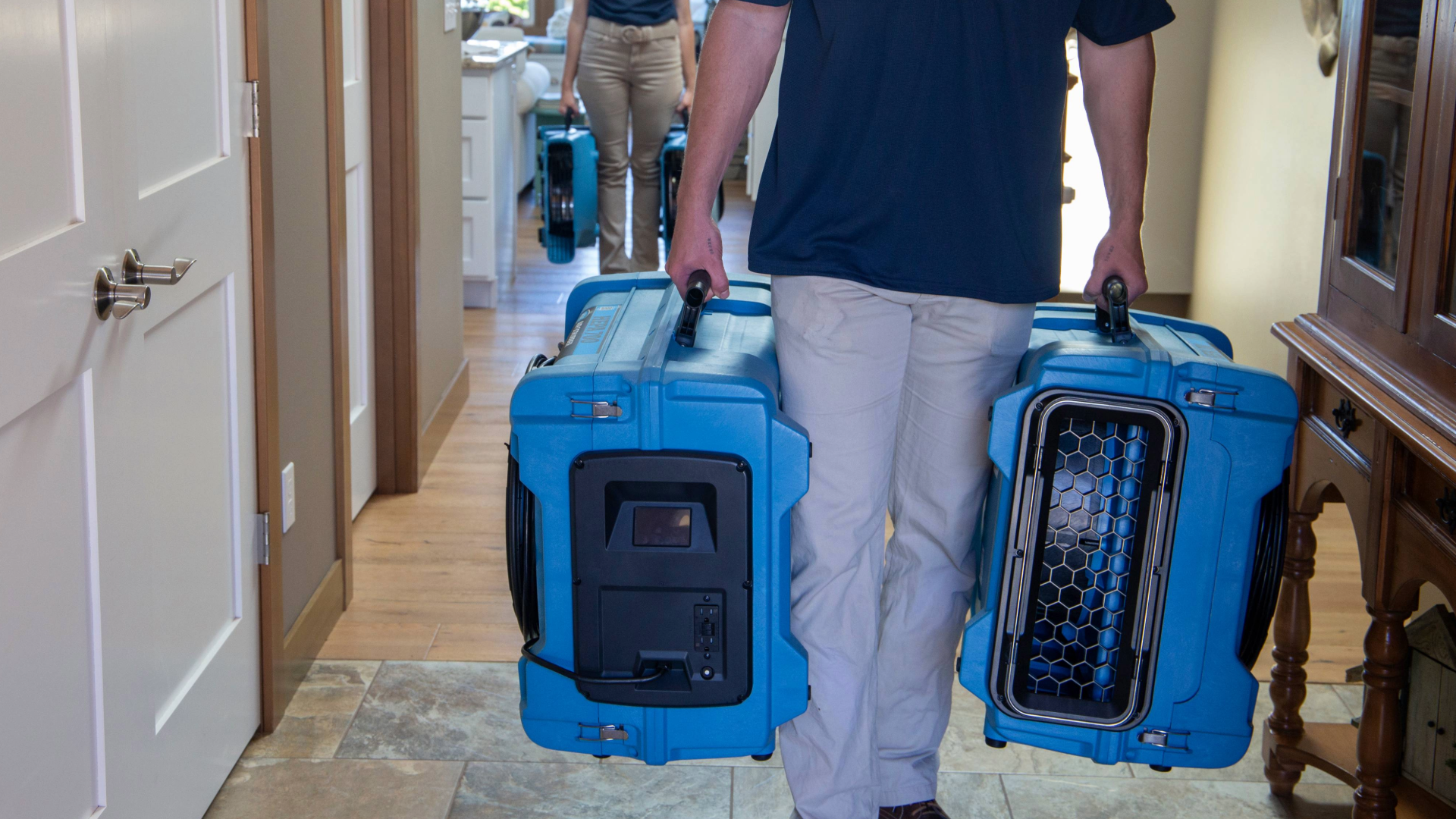By TJ Grim, Ready 2 Respond Trainer
The hum of drying equipment after water damage can feel disruptive to building occupants, leading to questions and even interference with the process. Clear, proactive communication is essential to help tenants, office workers, and students understand the purpose of the equipment and cooperate with the drying process, and avoid actions that could delay progress or cause additional damage.
Effective messaging highlights the benefits: faster restoration of safe, healthy conditions, prevention of mold and indoor air quality issues, protection of belongings, and a quicker return to normalcy.
Why Communication Matters
Even the best drying setup can be undermined if people don’t understand what’s happening. When equipment is unplugged, moved, or shut off – even briefly – it can extend drying time, lead to uneven results, or allow secondary damage, such as mold, to take hold. Misunderstandings can also create tension with tenants, patients, students, or staff, eroding trust in building management.
Proactive communication helps occupants feel informed and reassured, reduces complaints, and increases the likelihood that equipment will remain in place and running until the job is done.
Common Questions – and How to Answer Them
Knowing what occupants are likely to ask – and preparing clear, consistent answers – goes a long way in preventing problems. Here are some common questions, along with ways to respond:
“How long will this take?”
Avoid giving a fixed number of days, so that reasonable expectations are established upfront. Each drying situation is unique, with varying factors, and drying is complete when materials are returned to a dry standard.
How to respond: “We check moisture levels daily and will remove the equipment as soon as the materials are fully dry. That may be a few days or more – we will keep you updated and make every effort to return the space to normal use ASAP.”
“Why is it so noisy and/or hot?”
Airflow and heat are part of the drying process. They help moisture evaporate faster and prevent mold growth.
How to respond: “The noise and warmth mean the equipment is working properly. We understand it’s inconvenient, but it shortens drying time, protects the area from further damage, and helps ensure healthy indoor air quality.”
“Can I turn this off or move it?”
Equipment should remain operating and where placed for optimal results. Even short interruptions can set back the drying process.
How to respond: “It’s important to keep it running where it is. Moving or unplugging it can extend the process or cause inconsistent drying. If it’s in the way, please let us know so we can adjust it safely.”
“Is it safe to be here?”
Quality drying equipment is designed for use in occupied spaces and safety-certified for use indoors.
How to respond: “Yes, the equipment is safe, and the airflow and heat it produces is normal. If necessary and it’s possible, we might relocate people temporarily, and we’ll be sure to communicate that clearly.”
“How much electricity is this using?”
This question is particularly common in multi-family housing units. It’s important to put energy use in context.
How to respond: “The equipment does draw power, but it’s typically less than normal household appliances. Its short-term use is necessary to restore good indoor air quality and prevent secondary issues like mold or further damage.”
Communication Strategies That Work
Beyond answering questions, there are steps that facilities teams can take to prevent confusion and improve cooperation:
-
Get ahead of questions: Communicate as soon as possible after a water incident, even if you don’t have all the answers yet.
-
Set expectations clearly: Provide written notices or quick guides explaining the purpose of the equipment, why it must stay running, and what occupants should expect.
-
Use multiple channels: Door tags, hallway signage, emails, text alerts, and in-person conversations all help reinforce key messages.
-
Designate a point of contact: Give occupants an easy way to reach someone with questions.
-
Share progress updates: Even brief updates like “Moisture levels are dropping as expected” help build confidence that the process is working.
Final Takeaway: Drying Ends When It’s Dry
Water damage response doesn’t end with setting up equipment – communication is an essential part of the process. By anticipating questions, setting expectations, and explaining the “why” behind the drying process, facilities teams can keep equipment running, reduce frustration, and help the building recover faster and more effectively.
Contact the R2R team for assistance with a customized water damage response plan that includes assessment and training. For facility management tips, follow us on LinkedIn and subscribe to our Facility Insights newsletter.


Before the Freeze: Tips for Avoiding Winter Water Damage
How Standardizing Your Drying Equipment Saves Time and Money